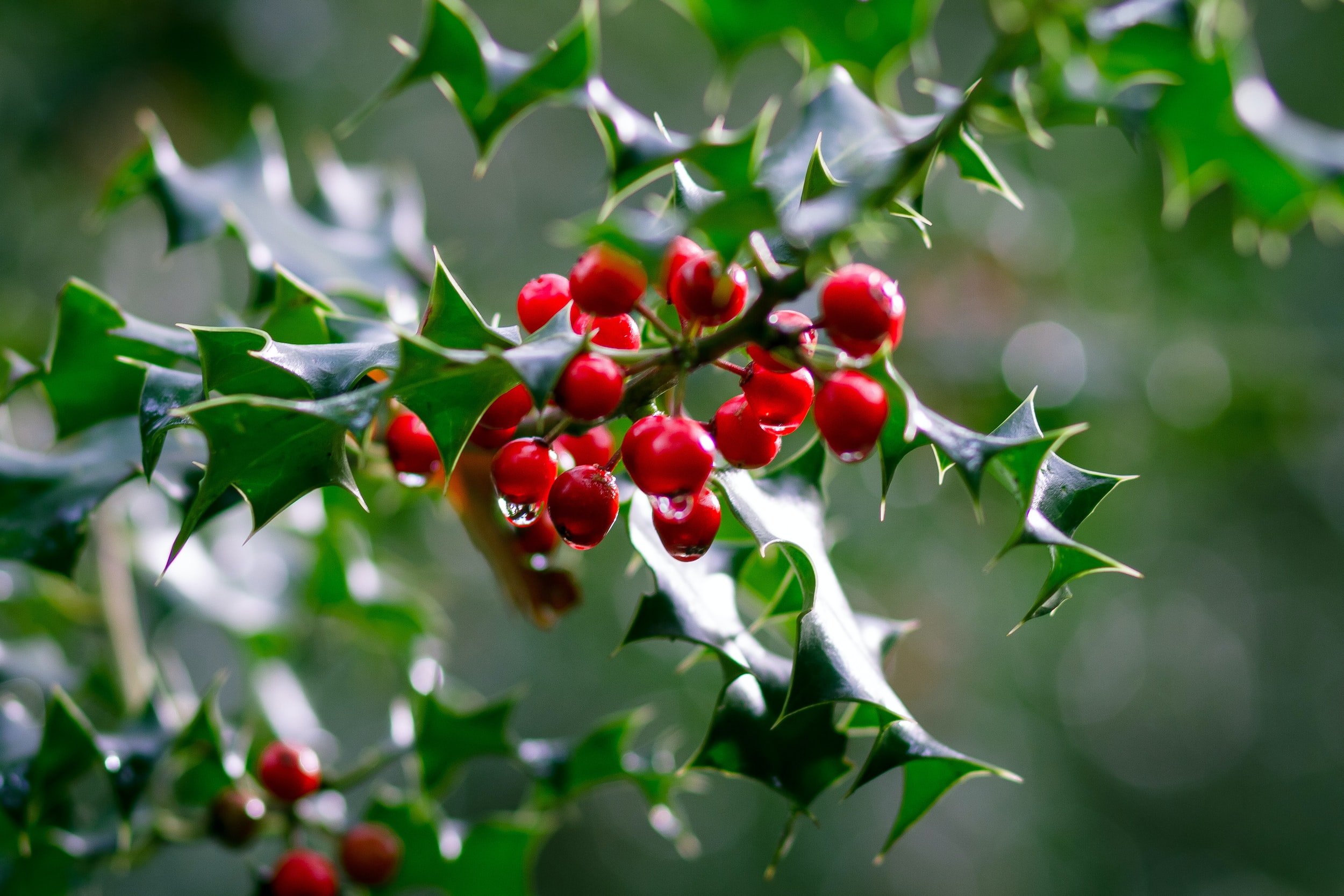Secret Stories of the Trees: Holly
Holly is an iconic evergreen that’s been used for centuries and across the globe for winter festivals, and that’s probably because, in the dead of winter, it’s one of the few things that actually looks alive.
And it not only looks alive—it looks strong and vital and hearty, which is probably why it’s long been associated with protection and strength and magic, of course!
A Magical Tree
Holly’s reputation as a magical tree goes back to the Druids, who considered holly a sacred tree and used holly wood for magic wands. Wands made of holly wood possessed the ability to banish unwelcome spirits and command one’s bidding.
Legend also tells us that in winter, holly shelters the sprites and fairies of the forest. So, if you clip some of the branches and bring them inside, the fairies will follow. And, in exchange for the warmth of your hearth they will bring you good luck!
And in Scotland, during, Hogmanay (Scottish New Year) , tradition holds that one should place a silver coin at the bast of a holly tree to keep the fairies sheltered there happy.
A Living Lightning Rod
Another legend says that if you plant holly tree next to your house, it will protect you from witchcraft and lightning strikes.
Science now confirms that the little pickles on the end of the leaves do conduct electricity—so this is, in fact, a living lightning rod!
I love it when science lines up with the wisdom of the ages! Maybe that’s why, in Norse and Celtic mythology, the holly tree is linked to Thor and Taranis, god of Thunder.
The Holly King and the Oak King
One of the most famous and enduring folktales in Celetic Mythology is that of the Holly King and the Oak King. Each year, these two kings engaged in an epic battle. The Holly King ruled over the half of the year from the summer to the winter solstice. At this time the Oak King defeated the Holly King to rule for the time until the summer solstice again.
The Holly King is often depcted as a giant wielding a large club made from holly wood. He also dresses in red, wears a sprig of holly in his tangled hair, and is sometimes depicted driving a team of eight stags. (Sound familiar?)
The Holly King/Oak King drama was acted out each year in villages throughout England and eventually, holly became so closely associated with the holiday that people simply referred to is as “christmas”, and the trees themselves as, “christmas trees”.
Holly King or Santa? (Getty Image)
Plant Holly to Feed and Protect Wildlife!
While every part of the tree is toxic to humans, holly is an excellent source of protection, shelter and food for wildlife.
If you are interested in planting some holly, there are over 500 species worldwide, but here in the US there are around 14-15 species of native hollies. Illex opaca is the classic looking native evergreen. That said, roughly half of our native varieties are deciduous, but all do provide critical food sources for birds in winter. Holly berries are a favorite of songbirds like thrushes, mocking birds, robins, catbirds, bluebird and thrashers. Just know that holly trees are sexed—some are male and some are female—so be sure you plant both so you get the beautiful berries for your feathered friends!
*Please be aware, that English Holly (Ilex aquafollium) probably the most well known variety, is considered invasive in some areas.
Secret Stories of the Trees; Holly
Do you have any special stories associate with the Holly Tree? I’d love to hear them! Share in the comments below!



